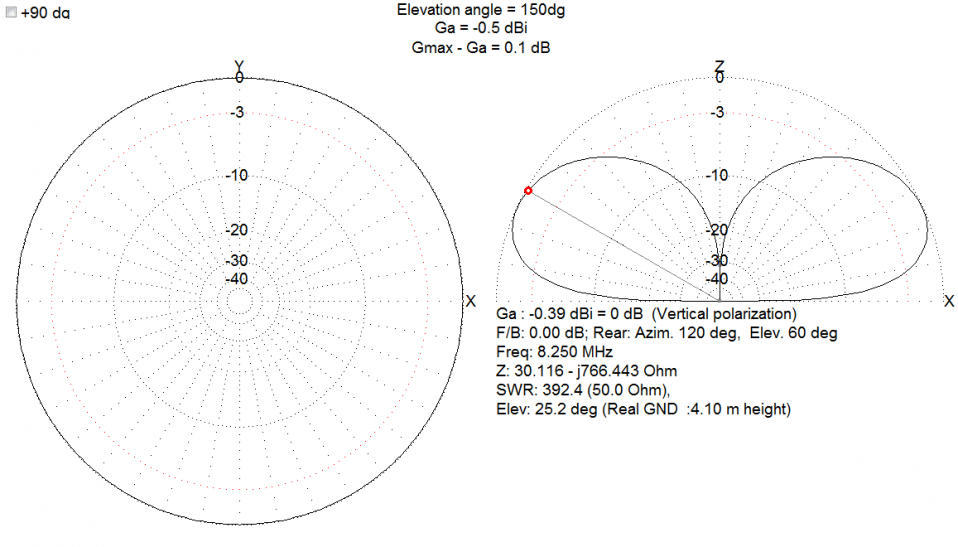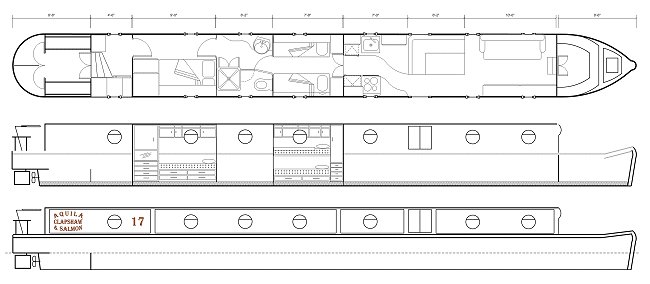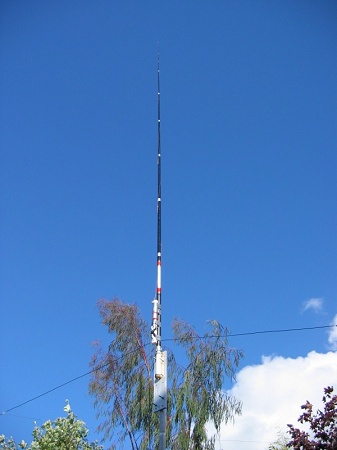Freecycle? It’s a fantastic idea and it works. You give stuff away instead of landfilling it. I’ve managed to give away stereo systems, speakers, computers, lights, ironing boards, you name it. I have also picked up loads of stuff for the scout radio group, like TVs, computers, monitors and cables. Find a Freecycle in your area here: http://www.freecycle.org/.
Basically, the deal is that you offer something and some accepts it. You end up in a private dialogue vie email to work out the finer points of the item and to work out if the item is suitable for you. And just like in life, some experiences can be better than others. On the one hand you have very polite and magnanimous individuals – and on the other, the occasional rude one. The “rude” Freecycler has been discussed a number of times all over the internet. I call it the “curse of the freecycler”. An innocent email from one party is misinterpreted by another. Before you know it, they’re at each others throat. I replied to one lady once that the item I was offering had already gone – I had already posted the fact on the Yahoo group. Because it was a top-of-the-range Pioneer car CD player, I had a lot of interest. I gave it to the first respondent – then had lots of emails over the following few hours. I replied to them all; “Gone – see post in group.” I had this in my clipboard and replied to everyone the same. One lady just went mad at me saying what a horrible experience this Freecycling was. I told her to have a holiday. She was terribly upset. I just couldn’t fathom it and I felt terrible afterwards.
My real gripe though is those people that give away genuine rubbish. I answered a post from a gent that was Freecycling a ladies bicycle. It was described as needing some TLC. On collection, I didn’t have the heart to tell him, but this 50 year old cycle was completely rotten through. Not even the frame was salvageable. Instead I thanked him very much and took it to the tip for him (into the steel recycling bin!).
Over the past six months, I’ve been after six 17 inch monitors for the Radio Scout contest team. I have 5 but I need one more. This has been a hard project because most monitors on Freecycle are awful; either the focus has gone, the colours are all out or they’re not the size advertised, we need good quality 17 inchers and we drive them at 1280 x 1024 (or is it 1024 x 768? I can’t remember right now) so that N1MM and the other stuff we need works for the real estate on the CRT. Some brands are better than others and from experience. I learned to ask before jumping in with both feet and picking up something we didn’t want. My advice: For the recipient, check with the freecycler that what they’re offering is what you want. For the Offerer; Don’t Freecycle when you should actually be “Recycling”.
Anyway, back to our Curse problem. Graeme recently wanted some computer parts to give computers to local schools. Tescos do this with brand new ones, however someone’s clearly given him loads of monitors and now he’s trying to get rid of them. In the process, he’s now got PMT 🙂 It goes like this (in reverse order).
—–Original Message—–
From: Graeme Bromley [mailto:gb012h5803@blueyonder.co.uk]
Sent: 30 November 2007 16:31
To: Callum M0MCX
Subject: Re: monitors
Actually, pompus gits like you need to take a holiday, as far away as
you possibly go would be best.
Regards.
Graeme Bromley.
—–Original Message—–
From: Callum M0MCX [mailto:callum@uk.com]
Sent: 30 November 2007 16:19
To: ‘Graeme Bromley’
Subject: RE: monitors
Graeme,
I have collected about 10 monitors in the last year from well meaning individuals. Unfortunately, the majority needed breaking / recycling, because either the focus was completely b*ggered or they were 14 inch, scratched glass affairs that not even charities wanted.
Lord, I just read your message again. You need a holiday mate!
Callum McCormick
M0MCX
https://www.m0mcx.co.uk/
—–Original Message—–
From: Graeme Bromley [mailto:gb012h5803@blueyonder.co.uk]
Sent: 30 November 2007 14:56
To: Callum M0MCX
Subject: monitors
Hi Calllam,
At the risk of sounding rude, if you are so fussy, go and buy some, then
you can choose to be fussy cant you?.
Freecycle is about giving items away that are still useable which these
monitors are.
The items i have listed are free to collector, i really cant be bothered
with sorting all of the information out for you!.
—–Original Message—–
From: Callum M0MCX
Sent: 30 November 2007 14:41
To: ‘brommas@blueyonder.co.uk’
Subject: Re: Offer: 17 ” crt monitor(s) – Shirley
Hello Graham,
I acquire monitors for our radio group but I’m dead fussy(!)
If you have any of these left, may I ask you to tell me model number / brand etc – I don’t want to waste anyone’s time?
Thanks a lot.
Callum McCormick
M0MCX
https://www.m0mcx.co.uk/
Graeme loves this blog! He wrote to me today encouraging me to send him the link and then he said that really, he actually was a nice guy after all – he said so! Hey! Let me clip you his sincere words since he’s really coming out now:
(We’ll go in the “wrong” order to make a change:)
—–Original Message—–
From: Graeme Bromley [mailto:gb012h5803@blueyonder.co.uk]
Sent: 01 December 2007 11:06
To: Callum M0MCX
Subject: monitors
Anyway, i hope that you may possibly re-evaluate your initial thoughts about me, as i am actually a fairly “nice guy” oh and at the same time, i am disabled and i put myself out as much as my condition will allow to actually help other people.
Duh. Thanks Graeme!
—–Original Message—–
From: Callum M0MCX [mailto:callum@uk.com]
Sent: 01 December 2007 17:58
To: ‘Graeme Bromley’
Subject: RE: monitors
>>> i am actually a fairly “nice guy”
Oh great, Graeme is a nice guy. He said so!
And what about the rest of us?
He falls for the “Curse” of the Freecycler, here it comes:
—–Original Message—–
From: Graeme Bromley [mailto:gb012h5803@blueyonder.co.uk]
Sent: 01 December 2007 19:20
To: Callum M0MCX
Subject: Re: monitors please read me thanks.
Just carry on being a twat then buddy, knock yourself out!
Enjoy
Regards.
Graeme Bromley.
Graeme, you win a holiday. Call me.
Callum.
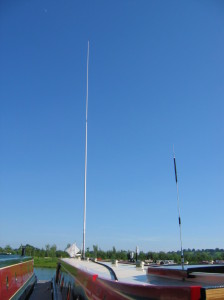 Close inspection showed that the antenna is a 2-piece 28’6″ (8.5 meter or thereabouts) white fibreglass hollow pole with a 2 foot aluminium heavy-duty sleeve at the base for mounting purposes. This main lower section (of around 17 feet or so) has three elements running the full length embedded inside the fibreglass at time of manufacture from the side feed to the top, in 120 degree arc segments. A heavy-duty male screw fitting at the top, electrically connects to the top section’s female thread.
Close inspection showed that the antenna is a 2-piece 28’6″ (8.5 meter or thereabouts) white fibreglass hollow pole with a 2 foot aluminium heavy-duty sleeve at the base for mounting purposes. This main lower section (of around 17 feet or so) has three elements running the full length embedded inside the fibreglass at time of manufacture from the side feed to the top, in 120 degree arc segments. A heavy-duty male screw fitting at the top, electrically connects to the top section’s female thread.





















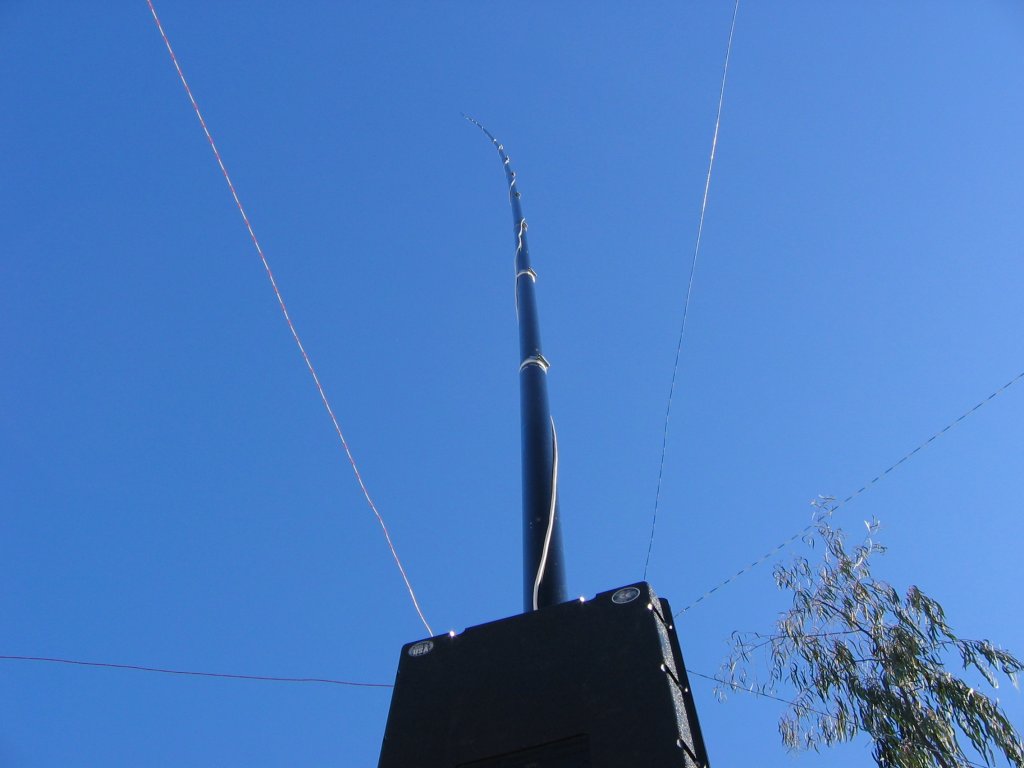
 On Sunday, 17 Feb 2008, the M0XXT boys hosted Thinking Day On The Air (TDOTA) for the local Girl Guide district. We were QRO as usual on 40m and 80m for UK and EU.
On Sunday, 17 Feb 2008, the M0XXT boys hosted Thinking Day On The Air (TDOTA) for the local Girl Guide district. We were QRO as usual on 40m and 80m for UK and EU.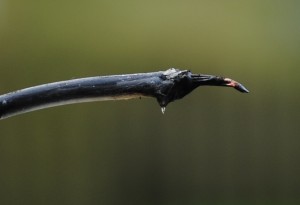








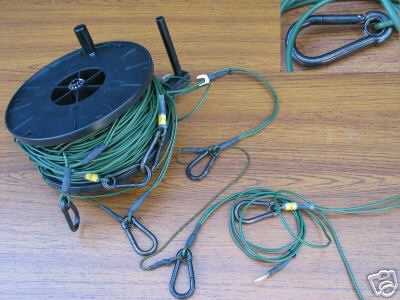 I recently purchased an interesting reel of antenna cable made up of various different lengths of antenna wire and connectors in a contemporary design made of modern materials. The handle and bearing appears to be aluminium but the reel is of a high-impact plastic. This would have been fabulous if made in aluminium. There’s quite a few different lengths of this stuff and since I’ve yet to pull it all out in the garden, I can’t fathom it all out while its trailing around a room.
I recently purchased an interesting reel of antenna cable made up of various different lengths of antenna wire and connectors in a contemporary design made of modern materials. The handle and bearing appears to be aluminium but the reel is of a high-impact plastic. This would have been fabulous if made in aluminium. There’s quite a few different lengths of this stuff and since I’ve yet to pull it all out in the garden, I can’t fathom it all out while its trailing around a room.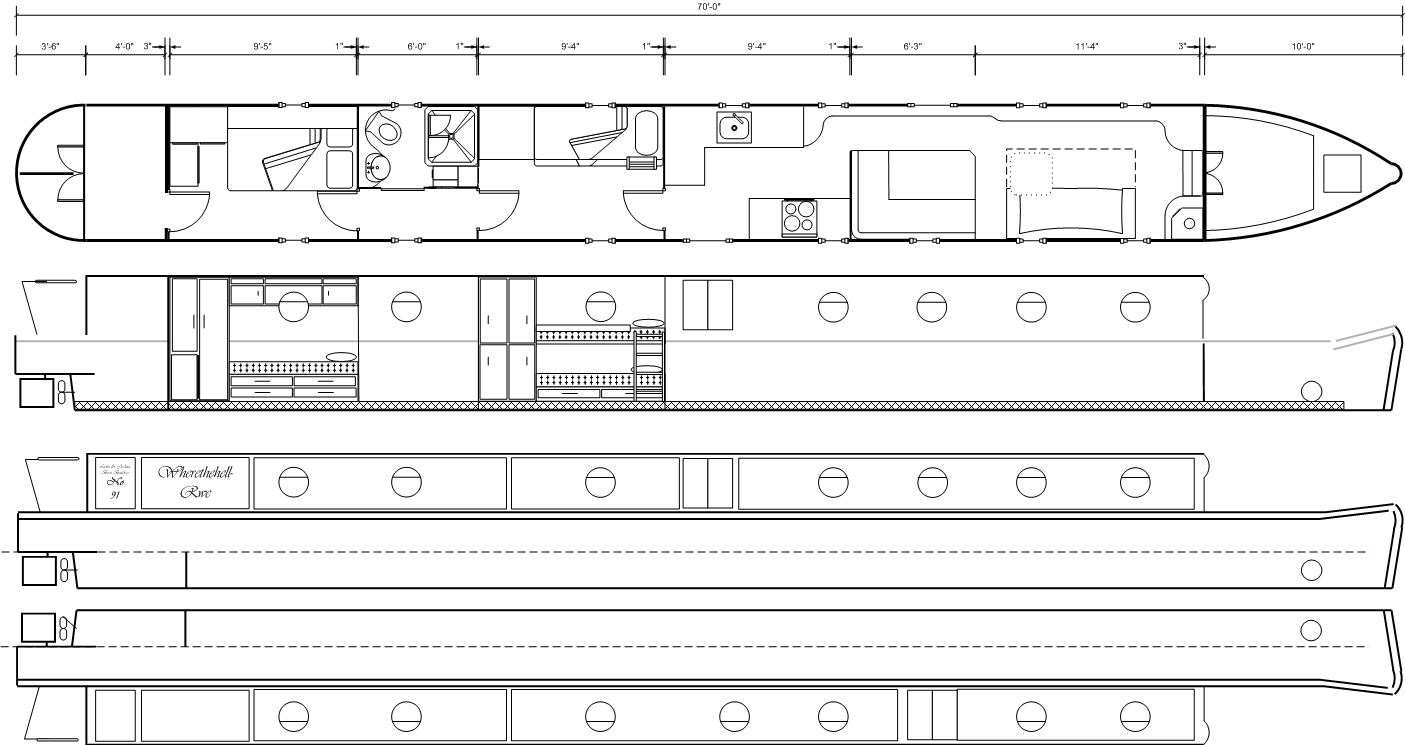
 I’ve been running on less than 200V AC most evenings for the last 18 months. Weird stuff was happening to my linear amplifier and I was getting higher output during the day to the evening. To cut a long story short, Central Networks have just completed a complete re-engineering job at the end of our cul-de-sac with a new transformer and new feeder. Amazing what you can get done if you are polite (not a strong point of mine).
I’ve been running on less than 200V AC most evenings for the last 18 months. Weird stuff was happening to my linear amplifier and I was getting higher output during the day to the evening. To cut a long story short, Central Networks have just completed a complete re-engineering job at the end of our cul-de-sac with a new transformer and new feeder. Amazing what you can get done if you are polite (not a strong point of mine).









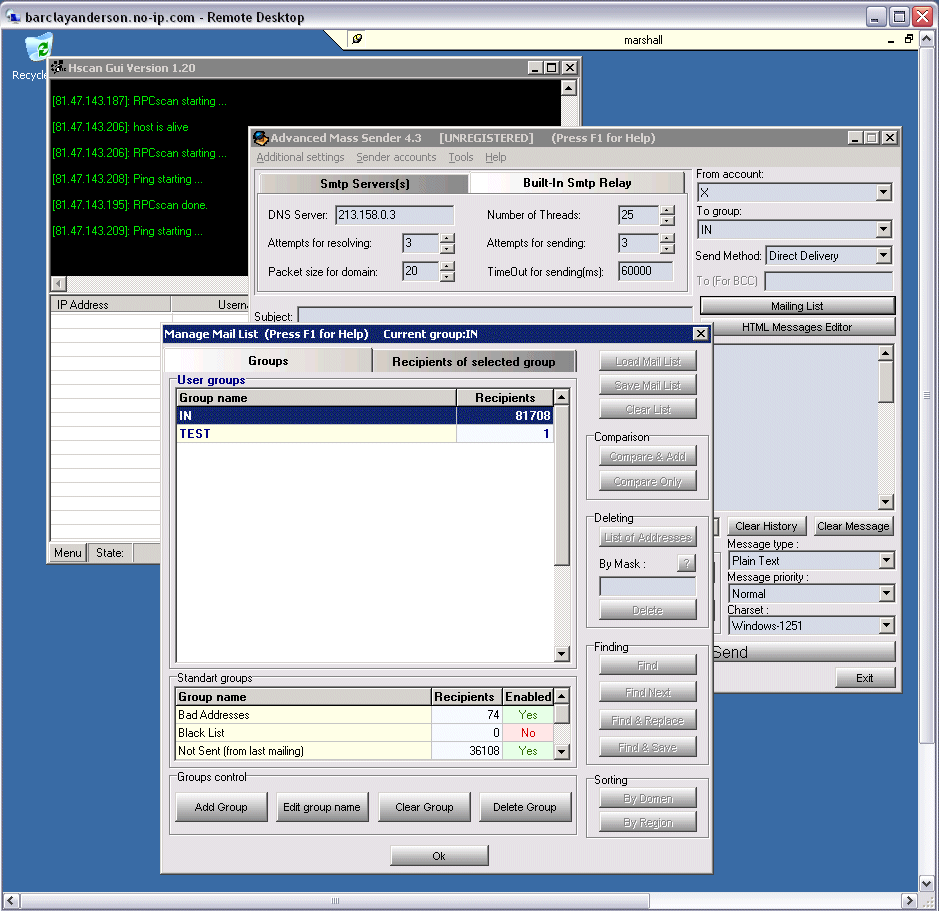
 We’re having a narrowboat built currently by Louis and Joshua narrowboats in Doncaster (USA visitors, please google “narrowboat”) and obviously I’m preparing for some /portable radio work with a small shack being built for me to house a laptop, FT1000MP and a small ACOM (this being a radio ham site, I thought I ought to put that bit in).
We’re having a narrowboat built currently by Louis and Joshua narrowboats in Doncaster (USA visitors, please google “narrowboat”) and obviously I’m preparing for some /portable radio work with a small shack being built for me to house a laptop, FT1000MP and a small ACOM (this being a radio ham site, I thought I ought to put that bit in).
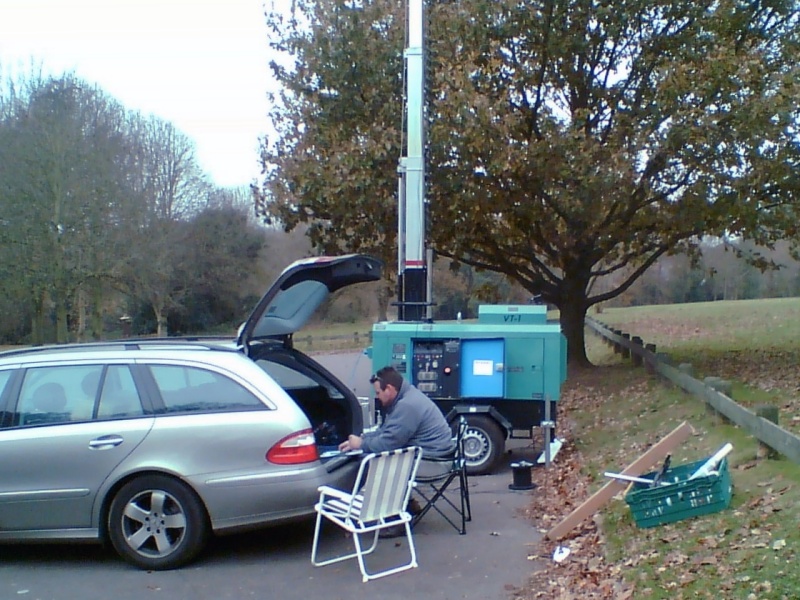 James and I tested out a doublet today in preparation of our trip to Hampton in Arden Cubs, Friday 30th November.
James and I tested out a doublet today in preparation of our trip to Hampton in Arden Cubs, Friday 30th November. Have you heard about the Travelpod?
Have you heard about the Travelpod?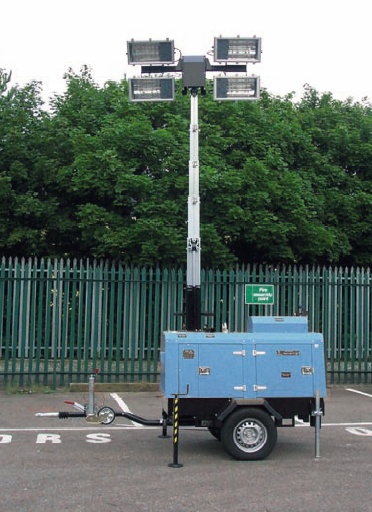 A 10k generator and a lighting tower; the ultimate toy for a radio amateur. You get a generator, a hydraulic 10m tower and big, big lights – all in one package. It’s heavy but with a braked trailer and the right vehicle, it’s breeze.
A 10k generator and a lighting tower; the ultimate toy for a radio amateur. You get a generator, a hydraulic 10m tower and big, big lights – all in one package. It’s heavy but with a braked trailer and the right vehicle, it’s breeze.














































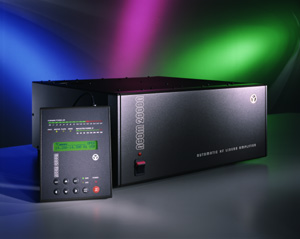

 Looking back in the archives , you’ll see that I wanted to transmit the internet all over the place using a parabolic grid dish on a rotator mounted on the roof. The project is now closer, last night I successfully added a router to my local LAN and connected a PC on a different subnet – this means that anyone connecting will not see my home network. Important for me!
Looking back in the archives , you’ll see that I wanted to transmit the internet all over the place using a parabolic grid dish on a rotator mounted on the roof. The project is now closer, last night I successfully added a router to my local LAN and connected a PC on a different subnet – this means that anyone connecting will not see my home network. Important for me! It’s only good for 150 watts or so but I’ve just loaded up top band on a half-sized G5RV at the feedpoint with this little beast. Tunes from 160m through to 10m. I run 12 volts to the loft with a spare run of RG58 (I knew that coax would come in handy!).
It’s only good for 150 watts or so but I’ve just loaded up top band on a half-sized G5RV at the feedpoint with this little beast. Tunes from 160m through to 10m. I run 12 volts to the loft with a spare run of RG58 (I knew that coax would come in handy!).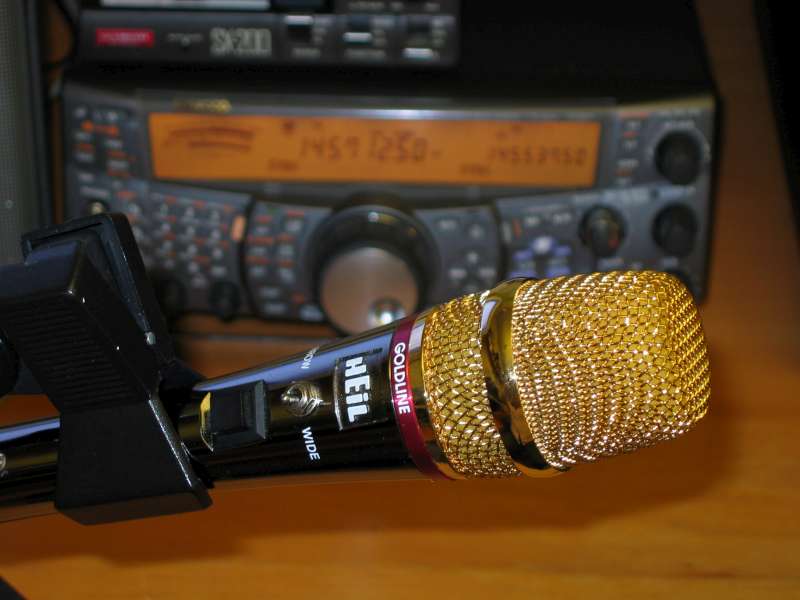 Competing in the Baltic 80m contest last night, an operator broke off from his pile up and asked what radio I was using. He really liked the audio. I was using my standard FT1000MP Mk5 – but with the Studio Element on my Heil Goldline. This has to be one of the smoothest elements in the world and it really suits the FT1000 series. I have tried the ‘thin’ elements but they don’t suit me. I have a deep (and loud!) voice and with the studio element, it all comes together in one broadcast type sound.
Competing in the Baltic 80m contest last night, an operator broke off from his pile up and asked what radio I was using. He really liked the audio. I was using my standard FT1000MP Mk5 – but with the Studio Element on my Heil Goldline. This has to be one of the smoothest elements in the world and it really suits the FT1000 series. I have tried the ‘thin’ elements but they don’t suit me. I have a deep (and loud!) voice and with the studio element, it all comes together in one broadcast type sound.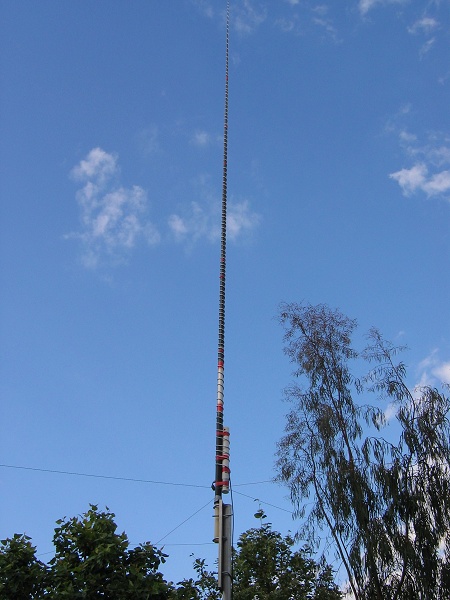 Chris (G0EYO) kindly modelled my 40 meter vertical with loading coil (
Chris (G0EYO) kindly modelled my 40 meter vertical with loading coil (